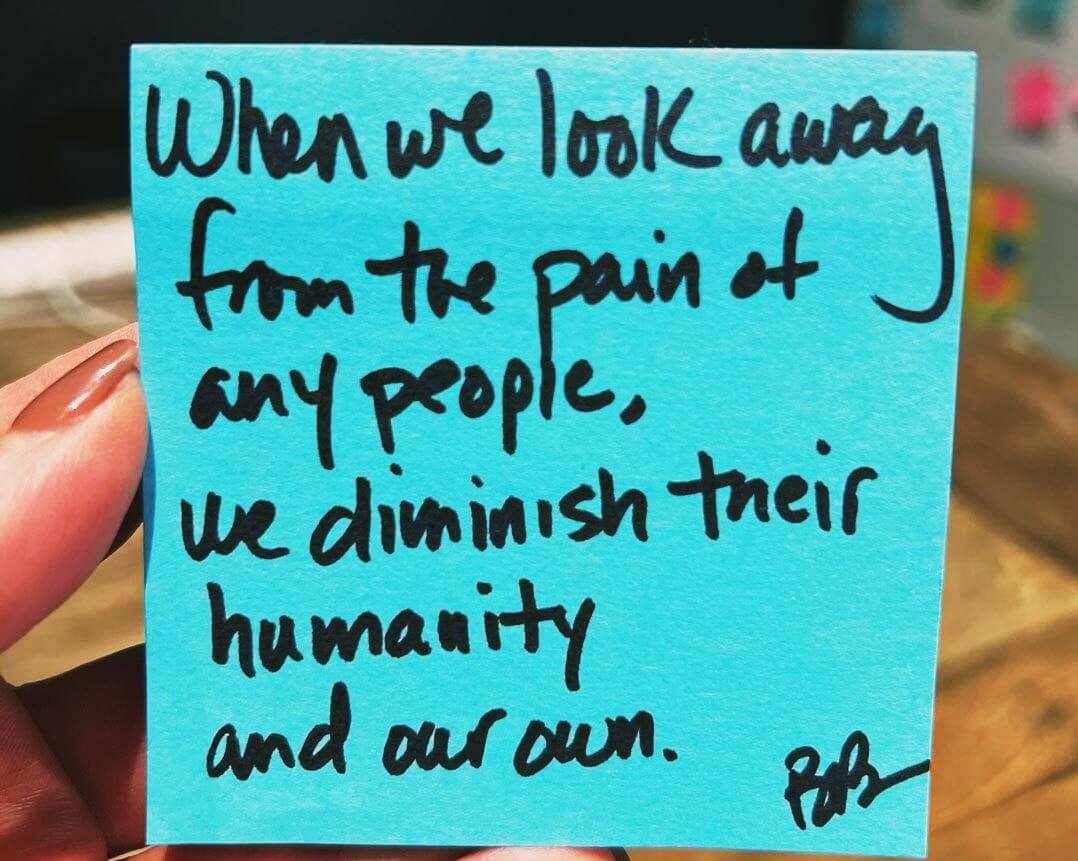This piece was written by FTMA’s Kat Welsh.

With Tony Clark – Founder & CEO.
“It’s A Revolution of Happening. We’ve Just Got to Do Something. These are Human Beings.”
It’s an established fact that structural timber makes up 75% of Aussie homes. Something that we’re proud of, promoting, and wanting to increase – for the industry and the climate.
But, do you know how many Australians don’t have the luxuries of a home, a bed, or even a timber-framed roof over their heads? Here are some figures that will bring on sadness, disbelief, perhaps gratitude for what you have, maybe also some fear. Fear? Yes. Because the line between having an income, a home, a mortgage, a car… and being homeless, is very thin. And, it’s a growing reality for more Australians, grappling with daily survival.

Information on how people become homeless is not widely known – there’s a lot of unawareness and assumptions. Unfortunately, governments for many decades have run with the rhetoric that it is mostly to do with a person’s poor life choices – it’s their fault somehow. Looking at studies and research, what contributes to someone becoming homeless are issues that any one of us could face. According to the Australian Human Rights Commission, homelessness risk factors are often due to other abuses of human rights – domestic violence is the biggest contributor to homelessness in Australia, followed by “family breakdown, mental illness, sexual assault, addiction, financial difficulty, gambling or social isolation.”
The future of the housing crisis, interest rates, cost of living (all the hard stuff that keeps getting harder) is impacting everyone – lack of skilled workers in construction, supplying the demand, first home buyers, renters, and yes, homeless people, all form parts of this picture. The government has committed $2 billion to the social housing kitty, to build thousands of new homes across Australia over the next 5 years. But what about the people that don’t have anything right this second? Where are they going to sleep tonight, let alone over the next 5 years? And the people that find themselves with nowhere to go next week, next month, and next year, what about them?
This is the hideous predicament that thousands of Australians find themselves in. It downward spirals from there. If you’re booted out of your home for whatever reason, how can you keep or get a new job if you don’t have clean clothes and can’t have a shower? You can’t get Centrelink support if you don’t have an address or a bank account. You sell what you have, to survive. Your life is without adequate clothing, warmth, or shelter. Living in extremities contributes to avoidable physical ailments. Accessing medical assistance or getting medications goes out the window. A recent study, showed that the life expectancy for Australians living on the street, drops to an average age of 44. That’s my current age.
Tony and Lisa Clark, wanted to do something about this void in the homeless emergency. In 2007, they founded the charity Backpack Bed for Homeless. If people are left stranded, turned away from services and unable to find shelter, how can the shelter come to them?
It had to be easy, it had to be accessible, and it had to be what someone actually needed – not a flimsy white doona. Which let’s acknowledge is a valuable commodity for someone with nothing but it’s not practical and it’s not safe. People on the streets need purpose-built gear. So, the Backpack Bed had to be something genuinely useful and lasting.
Tony co-designed the Backpack Bed with his wife Lisa. It is lightweight, fire-retardant, portable, and provides emergency privacy and shelter – suitable for our most vulnerable group in the community.
The Backpack Bed resides in 4 international museums and has won numerous awards, including the prestigious Red Dot Design Award – Best of the Best 2011 (an international design award that showcases the best innovations in the world), and the 2011 Australian International Design Award – GOLD. The Backpack Bed for Homeless program itself, won the 2011 Australian Human Rights Award for Best Community Organisation. Tony and Lisa Clark, were both also nominated for Australian of the Year both in 2015 and 2016.
The Backpack Bed saves lives. It’s not just a sheltered place to sleep for a night or two, or a week, month, year, or longer! It’s protection, and it’s prevention from health risk factors, hypothermia, and ultimately death. Hypothermia can affect anyone, at any age, with any level of health. Athletes get hypothermia if they’ve been competing in the cold / wet and their body temperature plummets when they stop moving.
The Backpack Bed gives people hope, that they are not the outcasts of society, and that somebody cares about their survival when homeless shelters can’t do more. It is symbolic as well as practical – at the darkest time.
Tony talked about a father coming into their office, with his 14-year-old son. Homeless. No options. They were given Backpack Beds – grateful to have customised equipment to keep them warm, dry, and protected from the insects and elements. “Nobody wants to do it tough, the streets are hard, it’s not a good place. There’s nothing cool about being cold, there’s nothing cool to being humid, or not having a shower every day. And if people do say it is, they’re lying, as a shield to protect their dignity,” Tony said. A Backpack Bed is a life raft in the middle of the churning ocean.
But the biggest hurdle that Backpack Bed for Homeless faces, is yes you guessed it… funding. They receive no government funding for their work in partnering with over 800 homeless agencies – all desperate for Backpack Beds. Tony was candid in saying that they had given up lobbying government to provide funds. The government’s view is that they are already investing in the future of housing needs.
A study conducted in 2018 by 180 Degrees Consulting (the world’s largest university-based consultancy for nonprofits and social enterprises), found that the community savings made from homeless people being provided a Backpack Bed, is substantial. “Using government figures [on homelessness], one Backpack Bed saves taxpayers $3,319 in criminal justice, hospitalisation, and health,” Tony said.
The criminal justice aspect is confronting. “Some folks freezing cold may become so desperate, they’ll do all sorts of stuff,” Tony said. “I know some folks who just gave up, they’ve been on the streets for so long they’ll do a crime just to get into jail for the winter.”
While a criminal sentence might be someone’s survival strategy to deal with the seasons, the sentence of being homeless can be lifelong. Once you’re in it, it’s bloody tough to get out, and if you do the impact of it can be permanent, mentally and physically. You do not wake up from it in a state of wellbeing.
For Tony, personally, he has been gifted with an entrepreneurial spirit, and the drive to pursue social justice. Which is exactly what this community needs. Before founding the charity, Tony’s IT company had major global corporations as clients, such as Yahoo, Pfizer, Sigma, Nissan Motor Company – the list goes on. Tony’s personality and endeavours were all about client brands, needs, and driving progressive change. So, when the lightning bolt struck Tony to create Backpack Beds, it was definitely well-placed with his abilities to make things happen.
After spending a couple of years designing and fundraising for the first Backpack Bed order, there were initial concerns about the reaction from homeless agencies. “There was resistance. Built for purpose material aid was such a foreign concept. A high-tech Backpack Bed was far beyond the typical flimsy garbage that was handed out,” Tony said.
Tony described the historical treatment of homeless people. Not that long ago, agencies would hand out insulation stuck together, essentially re-cycling, to people living rough. It came with the misguided expectation that homeless people should be grateful for it. “I talked to them [the homeless] about the garbage they received, and they said ‘we felt like animals’. They felt pathetic, less than human,” Tony said. Homelessness is harder when you’re treated without dignity.
Having faith and hope to come back into a system of society which has treated you as sub-standard, makes you not want to be a part of it, nor trust any offers of genuine help. “Backpack Bed for Homeless improves the relationships between agencies and the homeless they interact with. It’s an amazing development in the community.”
There are many agencies across Australia that work hard to support the homeless. Despite being under resourced, they can supply the Backpack Bed, when there are funds to make them. Sadly, supply issues over COVID have not helped. “Due to COVID and overwhelming demand we’ve run out of stock… but we’ve got another shipping container arriving with 2,100 pieces in May, so that’s good news.” Tony is hoping to put in new orders in April, for arrival later in the year. Money must be raised first.
FTMA are passionate about supporting this remarkable charity that sincerely makes a difference for people in our community – this is why they are our chosen charity for the FTMA 2024 National Conference. Our fundraising target is $10k. We’re hoping to get as much as possible from the silent auction during our 2024 Conference Dinner on March 19th.
If you’re not coming to the conference (hey, why not?! Click here and book!), you can still contribute by clicking the donate now button, which will take you to our fundraising page.
Whilst we’re campaigning for sustainable wood to be in every future home, please help us to also house people, even if they’re not under one of our timber frames.
Thanks everyone – we know that this will make a tremendous difference.

Our Principal Partners





